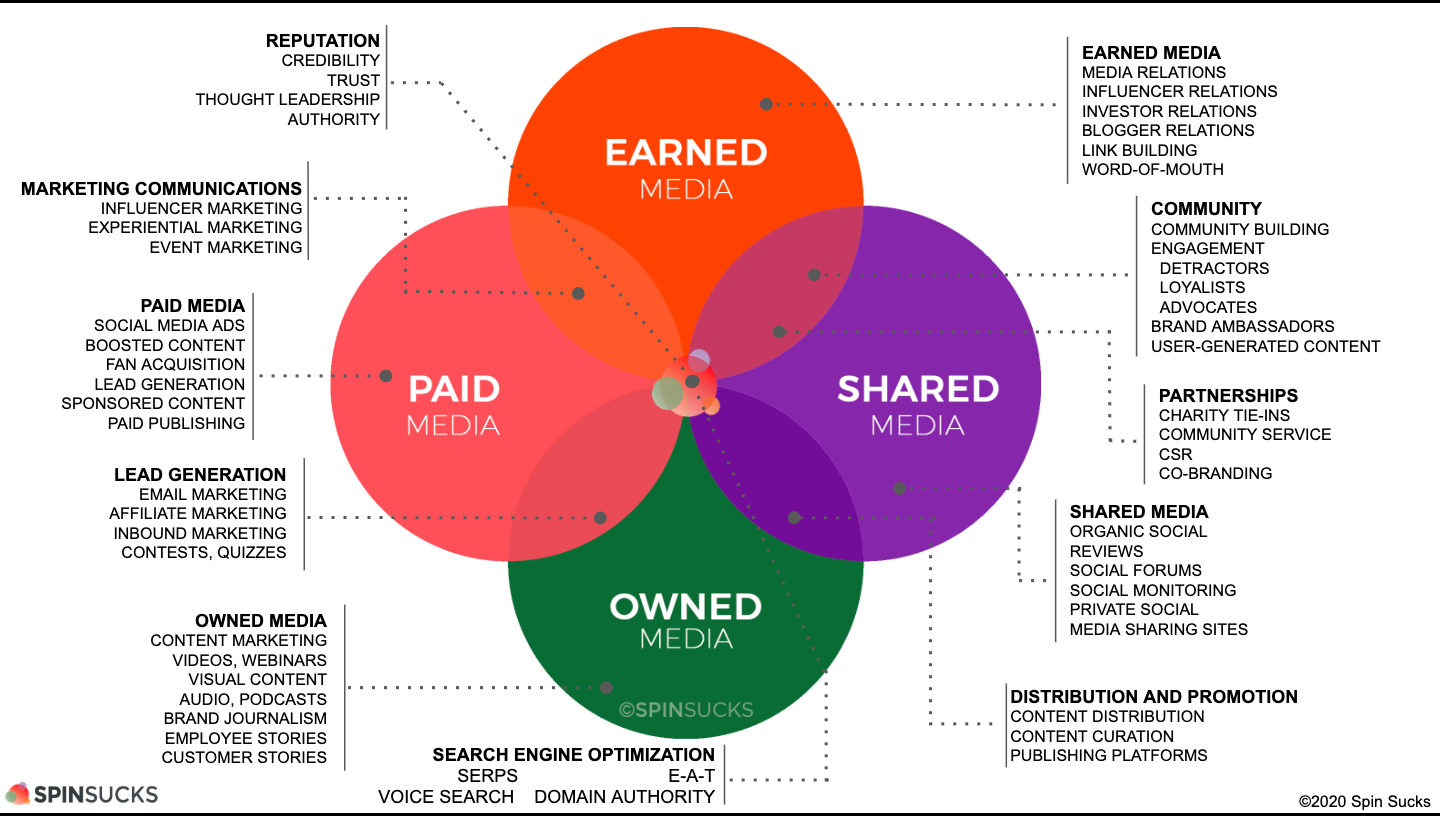
When I share the PESO Model integrated communications approach at conferences (or shall I say, when I used to speak at conferences…you know, when there used to be conferences), there are always a few attendees who come up to me after my presentation and tell me they love the approach, but it would be impossible for them to get their executive teams onboard.
What’s holding them back?
Leaders fiercely protect budget dollars and headcount.
Executives who have pet projects without a concrete return-on-investment that hoover up resources.
And large, bureaucratic structures that resist change the way a small child resists bedtime. Every. Single. Night.
Not that I know anything about the latter. Ahem.
(I mean, every night. How can one small child stay awake until 11 p.m.? It’s impossible for me!)
But here’s the thing: even if all of these issues are present in your organization, you STILL have the potential to gain support for moving to the PESO Model.
All it takes is presenting a convincing business case for why it’s in the best interest of the organization to do so.
I’m sure some of you broke out in hives after reading that last sentence, envisioning needing to partner with an MBA and spending months constructing a bulletproof plan with hard dollar cost savings projections.
While that may be necessary in some organizations, in most a solid business case will work.
This simply means you need to identify a business need, present an idea, weigh the risks and rewards, and present a plan.
Identify the Business Need the PESO Model Meets
No matter how passionately you believe in the PESO Model (and believe me, I understand that passion!), you will not gain the buy-in unless you can directly tie it back to your business goals.
- Is your organization looking to drive a significant revenue increase?
- Are you expanding a specific product or service line?
- Which overarching goals can you, as a communicator, best support through your efforts?
Identify the primary goal that needs extra support from communicators across your organization—that includes PR, marketing, HR, product, or customer success.
By its very nature of integrating paid, earned, shared, and owned media, the PESO Model provides a framework for integrating communication efforts across the organization.
Show Why the PESO Model Is Critical to Meet that Need
The benefits and outcomes of the PESO Model are ready-made to translate to common high-level organization goals.
PESO helps communicators “do more with less” (does anyone else despise that phrase?).
It helps you eliminate duplication of effort, encourage repurpose of content, and increase the reach and engagement of your efforts.
All of this instead of just creating more content and marketing materials.
PESO drives revenue by influencing potential buyers.
It also includes measurement and tracking into all communications activities to prove the investment.
PESO builds brand awareness through consistency of message, creating share-worthy content, and improving your domain authority and search placement.
PESO breaks down organizational silos and creates an opportunity for collaboration throughout the organization that enhance the customer experience.
Depending on your organization’s goals, you may want to meld two or more of these statements together to best illustrate the specific way in which the PESO Model will help move your organization forward.
To better support your recommendation, it can help to give a couple of other possible solutions for meeting the need, and point out why you chose to champion the PESO Model instead.
Weigh the Risks and Rewards of the PESO Model
During our 30-Day Communications Challenge, we walk participants step-by-step through how to implement the PESO Model in their organization.
One of the homework assignments is to do a SWOT assessment of their organization.
You’ll want to do the same thing, only focused on the effects of implementing the PESO Model in your organization:
- Strengths: What gives you an advantage over your competitors if you implement PESO?
- Weaknesses: Which areas for improvement could put you at a disadvantage to your competitors if you implement PESO?
- Opportunities: What external changes or trends could be business opportunities if you implement PESO?
- Threats: What external things could adversely affect your business if you implement PESO?
Present Your PESO Communications Plan
For many folks, this is the hardest part.
How do you present your business case at an executive summary level, and finally gain the buy-in to move forward with taking a PESO Model approach in your organization?
Approach it as you would approach pitching a reporter by warming them up with a good story that has an emotional hook.
Paint a picture of your company’s future state—executives’ improved thought leadership profiles, loyal customers turned brand advocates, internal departments collaborating and working more efficiently—and show how PESO is what gets you there.
And it can do so without a messy reorganization or a budget increase.
To ensure your message resonates with the team, identify one person who will be in the room when you present your plan, and present it to them beforehand for their feedback, and recruit them to your cause.
This can give you practice in responding to the inevitable challenges and questions you’ll face in your final presentation.
It also will help you make your case to have a supporter in the room who’s already onboard with your plan, and feels some ownership in helping you make your case.
The PESO Model is all about taking a smarter, more strategic approach to communications across your organization to create better outcomes for your customers and your bottom line.
As long as you make that clear in your presentation, you should have little trouble getting the green light to implement the PESO Model.
Watch our FREE masterclass and learn how to implement the PESO Model to achieve unparalleled communications results.